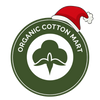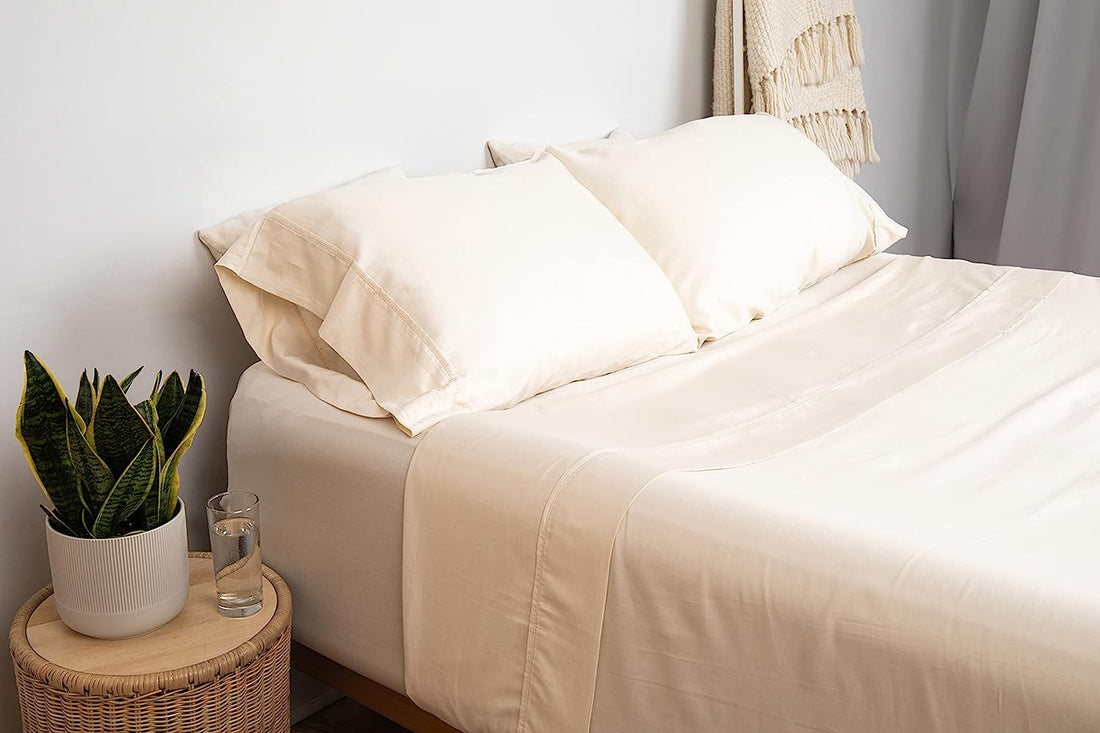Polyester and cotton and the two most common fabrics dominating the textile world. While polyester and its blends rule the domain of human-made textiles, cotton is firmly holding on to its crown as the most preferred and accessible natural fabric.
What is it that makes them so popular? Just how different are these versatile fabrics? And what does their ubiquity mean for the planet? We explore all these questions and much more in this blog.
Table of Contents
What is Polyester?
In the mid-1920s, A DuPont researcher W.H. Carothers created synthetic fibers by mixing alcohol with carboxyl acids in his lab. Based on Carothers’ work, a group of scientists John Winfield, James Dickson, W.K. Birtwhistle, and C.G. Ritchie, finally created and patented polyester fiber in 1941.
Polyester only reached American markets in 1951, promoted widely as a miracle fabric for being long-lasting, lightweight, economical, and resistant to wear and tear.
Clothes made from this synthetic textile looked great even without ironing days in a row. The fabric reached peak popularity in the 1970s before suddenly declining sales when double-knit polyester clothing started being ditched for being too coarse and uncomfortable.
However, the late 1980s saw fashion icons like Issey Miyaki opting for polyester instead of silk, giving the fabric a luxury twist.
Today, polyester clothing has undergone a dramatic change with technological innovations. We now have varieties that are comfy and luxurious, where polyester is blended with natural fibers such as cotton, wool, and silk.
While polyester may have managed to repair its image and wearability through the years, it is still a form of plastic and is derived from fossil fuels.
However, there are certain varieties of polyester that are relatively gentler on the planet, such as recycled polyester (rPET) and plant-derived polyester.
Here are some of the most common types of polyester fabric found in the market:
-
Virgin PET: Polyethylene Terephthalate (PET) is the most common polyester variant and is made by mixing ethylene glycol with terephthalic acid or methyl aster.
All of these ingredients are derived from either natural gas or crude oil. An Antimony catalyst also goes into the concoction to trigger the necessary reaction to form fibers.
Synthetic origins make PET a non-biodegradable material that takes up enormous amounts of energy and water during production. It also has a significant carbon footprint of 9.5kg CO2 per tonne of fabric produced. -
Recycled PET: As the name suggests, rPET is made by sourcing discarded PET bottles. They are then cleaned and melted and then respun to create new polyester fibers. It gives virgin polyester another lease of life, keeping it in the consumer cycle for longer and away from landfills.
Being just as quick drying and low maintenance as PET but with lower impact, rPET has become a huge hit among apparel brands to make sportswear and outdoor clothing. -
PCDT: Poly-clyclohexylene-dimethylene-terephthalate differs from PET in its chemical makeup. It has a greater elasticity and durability but is more favored for hard-wearing stuff such as upholstery and curtains over clothing.
-
Plant-Based Polyester: Even though this type has a similar chemical makeup as conventional polyester, it is a relatively low impact. In plant-based polyester, ethylene glycol is derived from plants like sugar cane instead of fossil fuels.
Manufacturing it is a costly process, and that’s why it’s not as popular as other varieties of polyester. Also, since it uses petroleum-derived terephthalic acid, it’s still not the most sustainable option.
That said, companies like Toray Industries are developing 100% plant-based polyester to give the world an eco-friendly version of this popular fabric. -
Poly Blends: A poly blend is made by mixing polyester with natural fibers. There is a vast range of poly blends available in the world of fabrics, including poly-cotton, linen blends, poly silk, and poly wool.
It’s generally done to combine a cheaper fabric (polyester) with a more luxurious one (high-quality cotton or silk) to create a more upscale fabric that fares better in softness, breathability, and comfort than pure polyester.
What is Cotton?
In comparison to cotton, polyester is a new kid on the block. The origins of this plant-derived natural fabric go all the way back to 3000 BC Indus Valley Civilization.
And it’s been rocking the textile world since then, accounting for over 60% of the share of apparel and home furnishings including cotton woven blankets. Its popularity lies in its breathability, comfort, durability, and versatility.
You can use it to make just about anything from t-shirts to blankets to shopping bags.
Cotton fabric is made by weaving or knitting the yarn. This is done on a loom by interlacing cotton warp yarn (longitudinal) with weft yarn (horizontal). Typically the more warp and weft threads present in the weaving process, the tighter the weave.
The common weaves of cotton are organic percale sheets, sateen, twill, and flannel. Percale is known for being crisp and ultra-breathable.
Meanwhile, Sateen has a dense weave, making it plush, silky to the touch, and resistant to wrinkling. It’s commonly found in high-end bedding. Check out our organic percale sheets set and organic sateen sheets set.
Cotton is also woven in a twill pattern - a diagonal weave with a distinctive texture and uneven surface, making it perfect for heavy-duty items like upholstery and denim apparel. Finally, we have flannel, which with its napped finish, makes for warm and fuzzy winter clothing.
Remember, cotton weaves are different from types of cotton. You can have various weaves available within each type below.
-
Pima Cotton: Characterized by super soft, extra-long-staple, and highly durable fibers, Pima or Sea Island Cotton is one of the finest varieties of cotton on the planet. It is smooth, absorbent, and resistant to tearing, pilling, and fraying. Pima also retains color exceptionally well. It originated in Peru, where it is still widely grown, along with Southwestern regions of the US and Australia.
-
Egyptian Cotton: Egyptian shares a lot of similarities with Pima, being an extra-long staple, incredibly soft, and long-lasting. It is, however, more expensive, requiring the specific climate conditions of the hot and dry Nile River Valley to thrive.
-
Upland Cotton: Upland cotton or Mexican cotton is cultivated extensively throughout the world. It boasts shorter fibers and wider climate adaptability than Pima and Egyptian varieties. In the US, Upland makes up 95% of cotton production.
A high production volume also makes it the most affordable type of cotton. However, there is the San Joaquin Valley Acala which is more expensive and finer in quality than other American-grown Upland cotton.
Polyester vs Cotton - Which is Better?
Now that we’ve explored the two fabrics individually, it’s time to pit them against each other in common parameters.
-
Comfort: Cotton scores in breathability over polyester due to its high permeability, allowing air to flow freely through the fabric. It’s soft, crisp, and cool and can acquire a silky smooth texture through a sateen weave. Organic variety is free of harsh chemicals, making them incredibly skin friendly.
Polyester, on the other hand, owing to its chemical-intensive makeup, can trigger allergic reactions in those with sensitive skin. It’s usually coarse to the touch unless blended with soft natural fabrics like silk.
The absence of pores makes polyester wick away moisture and can feel a bit hot and clingy at times. Those prone to skin rashes or sweating tend to do better with cotton than polyester.
-
Durability: Due to its chemical-based origins, polyester fibers are incredibly strong and wear-resistant. The synthetic fabric holds its shape well and doesn’t shrink upon first wash like cotton (except pre-washed cotton).
Polyester also resists wrinkles, stains, and fading better than cotton. A high thread count cotton sheet or clothing boasts longevity and robustness, but virtually indestructible polyester still aces the durability department.
-
Moisture: Cotton boasts a much higher moisture absorbency than polyester. It also dries up quickly, making it a tailor-made fabric for many eco-friendly kitchen products like reusable kitchen towels and bath furnishings.
Polyester is hydrophobic and wicks water droplets instead of absorbing it. It’s widely used in outdoor gear like tents and sportswear.
However, its tremendous moisture-wicking ability also makes it less breathable and more uncomfortable in hot and humid conditions.
-
Care: Both cotton and polyester are low-care materials and are easy to wash, quick to dry, and reusable. However, polyester’s artificial fibers are super strong. They also don’t have any natural stretch (unless blended with elastane), nor do they pill, meaning the fabric can handle daily machine washing.
Polyester is crease-free and can do without ironing. However, if you’re ironing the fabric, you need to be extra careful, as too much heat can damage it.
In fact, avoiding high heat settings for this synthetic textile is recommended for washing and drying as well. Cotton is just as easy to wash though it takes more time to dry, but it withstands heat better than polyester.
The Sustainability Factor - Polyester vs Cotton - Who Wins?
While polyester is highly durable and reusable, it is, after all, a plastic derived from petroleum. The process is chemically-intensive and releases contaminants into waterways.
Polyester also cannot biodegrade and only breaks down, releasing alarming amounts of microplastics into the water stream during every wash. There are varieties like rPET that have improved the perception of polyester by keeping it away from landfills, but the recycling process itself is quite challenging.
With the development of 100% plant-based polyester underway, perhaps, things will finally look up for this versatile fabric.
Related Article: What are Microplastics?
As a natural fabric, there’s no denying cotton is better for the planet. But the overall eco-friendly quotient of cotton depends on the way it’s grown.
It’s true it can be easily recycled and decomposes more readily than its synthetic counterparts, but conventional cotton is not without its flaws. It is labeled ‘the world’s dirtiest crop’ for being water-guzzling and requiring a staggering amount of pesticides and herbicides to grow.
But there’s a variety of cotton that’s becoming increasingly popular for offering the goodness of cotton without hurting the planet: Organic Cotton.
Why Choose Organic Cotton?
Organic cotton is cultivated in a way that requires less water and no harmful chemicals or genetically modified organisms (GMOs) to thrive.
While buying organic cotton products, it’s always good to check for legitimate certifications.
One such certification is GOTs, or the Global Textile Standard, which checks if the cotton is grown organically and is processed with bleach and chemical dyes. It also checks if the fabric has been produced in a facility adhering to rigorous social and environmental standards.

